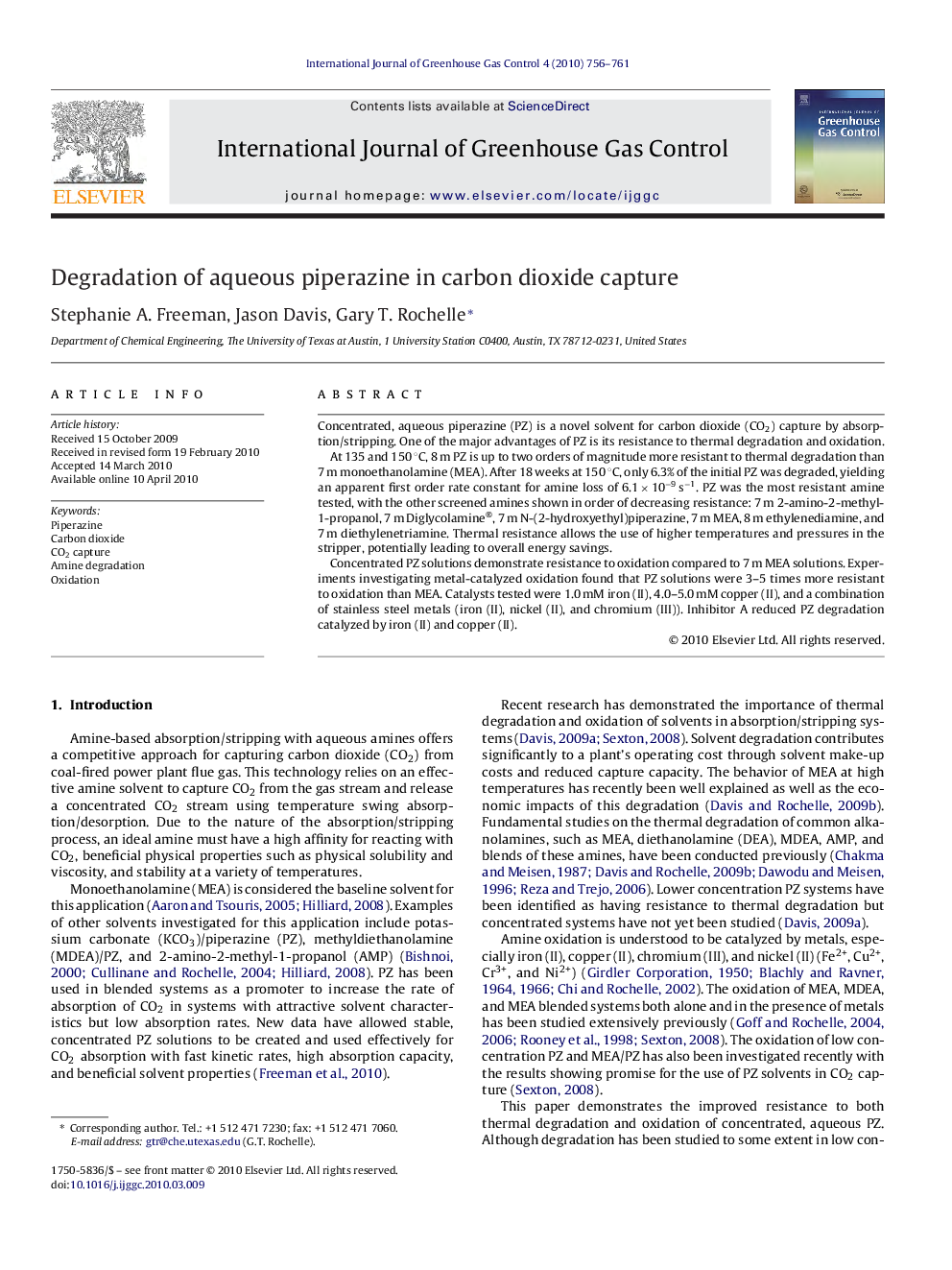| کد مقاله | کد نشریه | سال انتشار | مقاله انگلیسی | نسخه تمام متن |
|---|---|---|---|---|
| 1743839 | 1522026 | 2010 | 6 صفحه PDF | دانلود رایگان |

Concentrated, aqueous piperazine (PZ) is a novel solvent for carbon dioxide (CO2) capture by absorption/stripping. One of the major advantages of PZ is its resistance to thermal degradation and oxidation.At 135 and 150 °C, 8 m PZ is up to two orders of magnitude more resistant to thermal degradation than 7 m monoethanolamine (MEA). After 18 weeks at 150 °C, only 6.3% of the initial PZ was degraded, yielding an apparent first order rate constant for amine loss of 6.1 × 10−9 s−1. PZ was the most resistant amine tested, with the other screened amines shown in order of decreasing resistance: 7 m 2-amino-2-methyl-1-propanol, 7 m Diglycolamine®, 7 m N-(2-hydroxyethyl)piperazine, 7 m MEA, 8 m ethylenediamine, and 7 m diethylenetriamine. Thermal resistance allows the use of higher temperatures and pressures in the stripper, potentially leading to overall energy savings.Concentrated PZ solutions demonstrate resistance to oxidation compared to 7 m MEA solutions. Experiments investigating metal-catalyzed oxidation found that PZ solutions were 3–5 times more resistant to oxidation than MEA. Catalysts tested were 1.0 mM iron (II), 4.0–5.0 mM copper (II), and a combination of stainless steel metals (iron (II), nickel (II), and chromium (III)). Inhibitor A reduced PZ degradation catalyzed by iron (II) and copper (II).
Journal: International Journal of Greenhouse Gas Control - Volume 4, Issue 5, September 2010, Pages 756–761